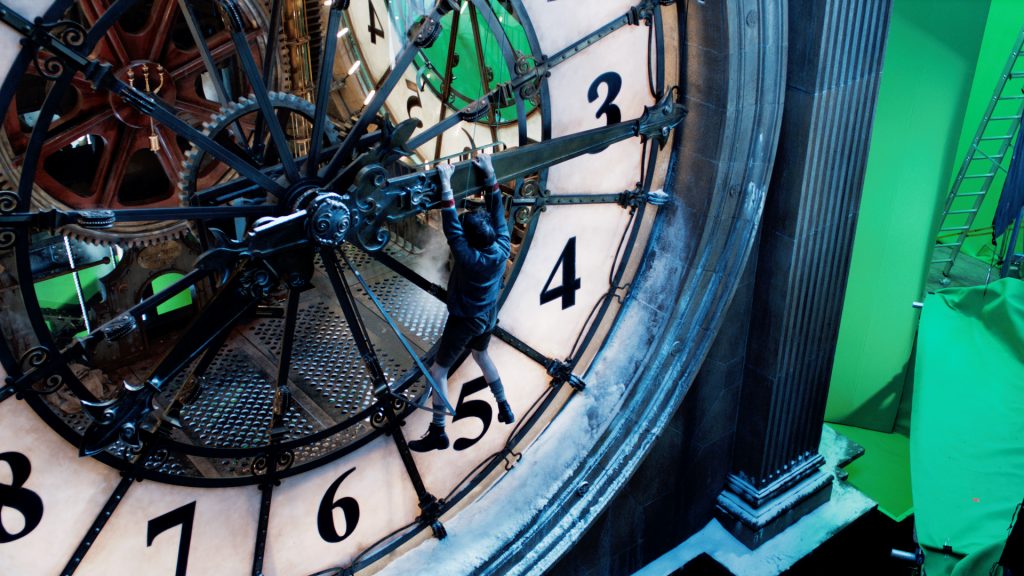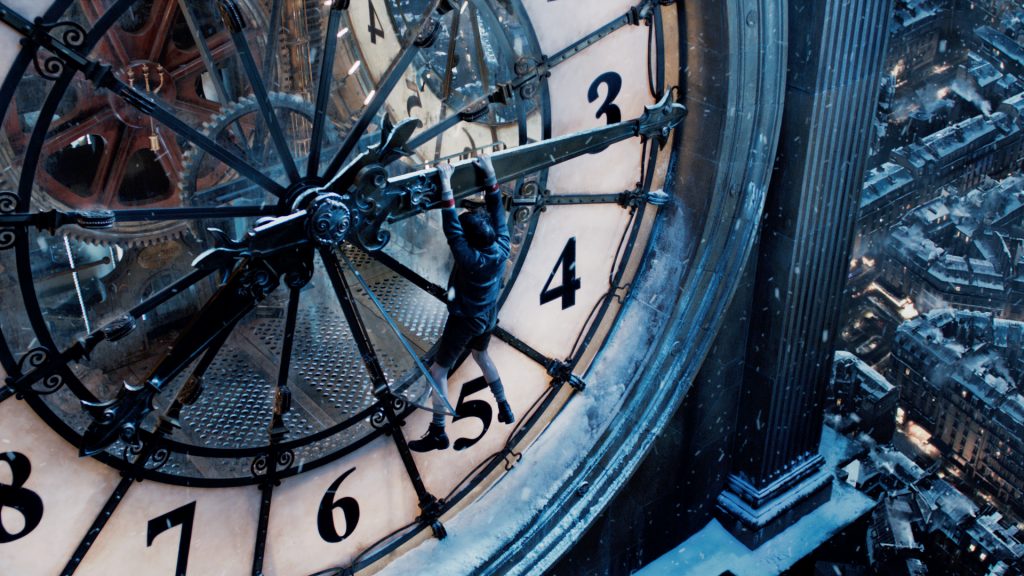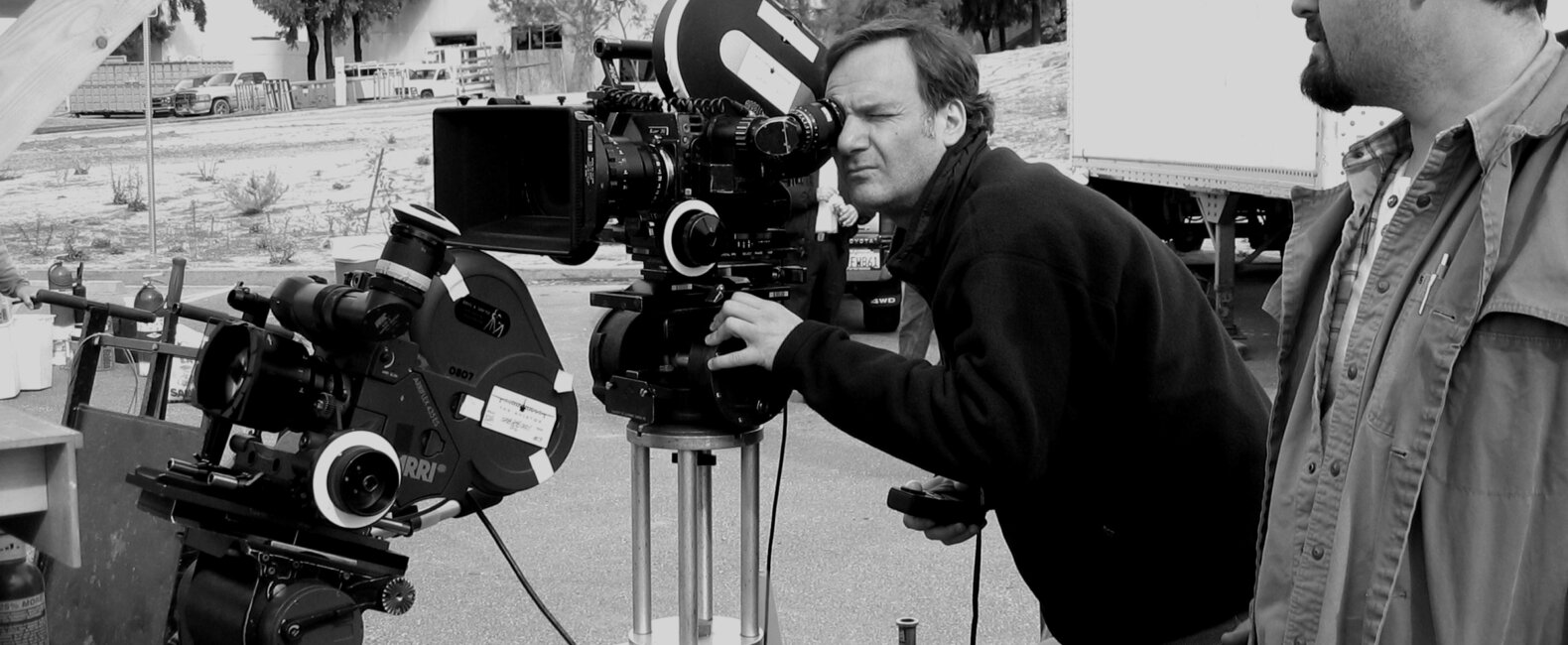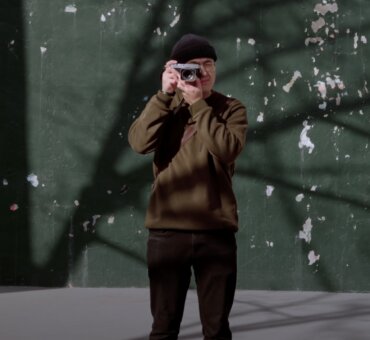When we asked Robert Legato about his success rate at achieving the impossible, he didn’t immediately answer the question. He’d never thought about it. This is the man responsible for the visual effects in films like Apollo 13, Titanic, Avatar, and The Jungle Book. A man fluent in the impossible. And yet overcoming it had rarely occurred to him. It’s the exact mind-set, we soon realized, that makes Robert Legato Robert Legato.
“Here’s a useful trick,” Robert told us. “People will tell you, ‘No, it can’t be done.’ And then you say, ‘Yes, it can be done, and we’re going to do it because now it’s worth doing.”
For more than 20 years, Robert has been relieving audiences of the burden of suspending their disbelief. His work has set a new bar for what’s possible on screen, his revolutionary digital techniques have ushered in a new era of computer-generated visual effects.
Here’s our conversation with Oscar-winning visual effects supervisor Robert Legato.

Musicbed: Were you interested in magic as a kid?
Robert Legato: [Laughs] No. Not at all. I didn’t even like visual effects in movies. I thought they were so phony and bad. When I saw Godzilla and King Kong on TV, I wasn’t amazed — I thought, This is horrible. I couldn’t figure out what everybody liked so much about it because, to me, it was so obviously fake. What I loved was the magic of the movies themselves. When my father took me to see Pinocchio in the theater, I was as fascinated with the projection beam as I was with the film. I kept looking behind me, trying to figure out how it worked. How could they get an image from one side of the room to another? Also, it was in color! I grew up before color TVs. Where did the color come from?!
As I started learning more about movies, I was fascinated that they took longer than two hours to make. They took 50 or 60 days. And it was all chopped up. There were different sets, things were filmed out of order. It became more fascinating to me the more fake I realized it was. I began to understand the entire thing was an illusion. Even our perception of motion was an illusion. It’s 24 still images. The motion doesn’t exist. So, to answer your original question: No, I wasn’t interested in magic. But I was interested in the tricks of the trade.
Why do some movie tricks seem incredible the first time we see them, and then, years later, they seem so fake?
Well, when you’ve never seen something before, you’re a bit confused by it. You’re not familiar with what you’re looking at. Also, you’re being taken in by a story you’ve never heard. When we look at the old King Kong movie, we’re looking at it with different eyes than someone who saw it in 1933. Our eyes have grown accustomed to much more sophisticated things. We’ll never really know what those special effects looked like the first time they were seen. We’ll never be able to look through those eyes. But that’s the whole point of movies: you go to see something you’ve never seen before. And that’s always my thought process when we’re making a film: How can we tell a story in a way it’s never been told before? Because the fact is, there aren’t that many stories. There are, like, seven stories. We keep retelling them over and over again. It’s the way we’re telling them that can be new.
Can you give us an example of newness in terms of special effects?
One big thing for me, in terms of digital effects, has been infusing an off-the-cuff, lifelikeness into a medium that’s inherently binary. It’s digital. As in, one or zero. On or off. There is no in-between grey area, but the soul of a film lives in the in-between grey areas. So I wanted to find a way of being improvisational within the confines of the digital. Also, I’m instinctually better at reacting to organic, impromptu situations than I am at figuring everything out in advance. I’m not inspired by blank pieces of paper. I need to be around stuff. Solving that problem is what led me to the whole idea of virtual cinematography, which we used on Avatar and later on The Jungle Book. It basically allows us to be spontaneous and reactionary and lifelike. Every CGI element is movable and alterable in real time, so we can make decisions just like we would if we were in a real environment. The secret is it was just a way of allowing me to be better at my job than I was equipped to be.
You were trying to get around your hatred of planning.
As you grow in this business, you discover your strengths and — if you’re smart about it — you also discover your weaknesses. Then you build yourself a ladder so you can reach the places you couldn’t get to on your own. I learned that my art form is reactionary, not conceptual. Give me something to react to, and I’ll put my personality into it. But that’s not how visual effects work. Or, I should say, worked. Not at all. They are, by their nature, conceptual. They’re thought up ahead of time, on storyboards, which is why they can sometimes feel like they were made in a vacuum — lifeless and not really a part of the film. So I finally said, “I don’t like this way of working, even though it’s been the backbone of the business.” I was honestly trying to find an easier way for myself to work. I wasn’t trying to create some grand innovation for other people, even though that’s what it’s becoming.


You must have gotten a lot of pushback.
Sure. But here’s a useful trick. People will tell you, “No, it can’t be done.” And then you say, “Yes, it can be done, and we’re going to do it.” I learned something while I was working on Apollo 13 that I’ve never forgotten. I was talking to one of the real Apollo astronauts who was an advisor on the film. I said, “How did we know we could get to the moon?” And he said, “We didn’t. We just chose to do it. And by choosing to do it, we found a way.”
Decide what you want to do. Find something that feels like a fresh way of telling a story. Then you will, by necessity, build the tools you need to make it happen. You don’t start with the tools; you start with the goal. “No, it can’t be done,” is a call to arms. It eliminates 99% of people from doing it. Is it going to eliminate you? My favorite line is, “We’ve never done it that way before.” Well, great! People have already seen it that way! If we’re going to do the same thing, then why not just play the old one again?
What’s your success rate in terms of achieving the impossible? How often has someone told you something couldn’t happen and it turned out they were right?
[Thinks for a long time] I’ve never calculated that. I think my success rate is pretty good. But that’s because I have a force of will that’s greater than my talent. I force myself not to fail. Which isn’t to say the plan doesn’t get changed along the way. It’s never a clean thing: setting out to accomplish something and accomplishing that exact thing. But it’s the setting out that’s important. You can’t be afraid to fail. My not being afraid to fail is the only thing that separates me from other people. That, not talent. Fear of failure eliminates the possibility of success. If you’re afraid you’re going to strike out, then you’re never going to hit a home run. You have to swing for the fences. You can’t be afraid of doing something bad. My success rate is pretty high, and that’s mostly because I’m not afraid to make a jerk of myself and look like a total failure. Look at anything you’ve ever loved: films, the space program… do you know how many ships blew up on the launch pad?
We lost a lot of good monkeys.
A lot of good monkeys. But look, anything worth making is worth persevering through.
What’s the biggest risk you’ve ever taken?
One big risk early in my career was on Apollo 13. I wanted to re-create the launch, but everyone told me to use stock footage. I said, “I don’t want to.” At the time, it felt like a huge risk. Talk about failure. We could have spent a lot of time and money making something that looked absolutely phony baloney. And there were a lot of naysayers. It was very tough to stick with my conviction and take a chance on doing it ourselves.
The same thing happened on Titanic. I wanted to do these grand shots of the entire ship, but the only way to do it was with computer-generated people on board, which had never been done before. Even James Cameron didn’t want to do it, and he’s a very strong director. But I’d seen this motion-capture technology they were using to create mythical creatures. An actor would do the performance, and they’d put a CG creature on top of it. I was like, “Why don’t we do that and put a person on top?” It sounds obvious now, but it had never been done at the time. It was very risky, and it took months and months and months. That’s what’s so gut-wrenching about this kind of work. You say you can do something, and it’s six months before you find out if you were right. In this case it turned out I was right, and it ushered in an entire new methodology for digital effects.
You’re a trailblazer in the world of digital effects. But we’re curious, what’s your favorite practical effect?
They’re all amazing. Truly amazing. One of the most useful is also the simplest. They came up with it in the 1920s and called it “the hanging miniature.” It’s fairly obvious. Basically, you build a miniature that’s, say, four times smaller than the real thing. Then you put that object four times closer to the lens. The illusion is total. Seamless. It’s amazing how effective it is. I’ve used it a few times. I used it on Shutter Island. It’s very cheap. Someone on that film praised me for it, as if it were some brilliant innovation. I was like, “This was patented in 1922. I’m just a good thief.”

How different was the visual effects thought process back then, in the ’20s, from the thought process now?
You know what? I think it’s identical. Look at a genius like Georges Méliès. You could give him all the tools we have today, and maybe the illusions would be better; but it’s still his imagination that would make him a genius. It’s the way people think that matters, not the tools they have. Two pieces of advice have helped me in my career. One was from Bob Zemeckis. We were doing What Lies Beneath, and he said, “If Alfred Hitchcock had a computer, how would he use it?” His point was not to copy Hitchcock’s work, but emulate his mind-set. It opened up all these new doors. In the end, it’s the mind-set that’s important. Not the technology.
The other line I got was from Frank Capra. He said, “At any one moment, whatever is on the screen is the star. If it’s an insert shot, if it’s an extra, if it’s Jimmy Stewart, if it’s anything.” Whatever the audience is looking at, that’s the movie star at that moment. That means you have to put the same care and love into everything. If one of my shots is going to be on screen, it needs to feel like it’s part of the fabric of the movie. There’s no such thing as a throwaway shot.
What do you wish you’d known earlier?
It’s hard to put into words. I’ll say it this way: What people are looking for in you is what you have. Your unique vision. I had to stop copying Gordon Willis’ photography in The Godfather before I could start making work of my own. I could never be him. But the important thing I realized was that he could never be me. That’s not pretentious. Your individuality is the most valuable asset you have! I wasted a lot of time trying to become Gordon Willis and Vittorio Storaro and Caleb Deschanel and Francis Ford Coppola and Martin Scorsese. But the thing is, the world wants your voice, not your imitation of someone else’s. The faster you understand that, the faster you’ll be on your way.


















































































